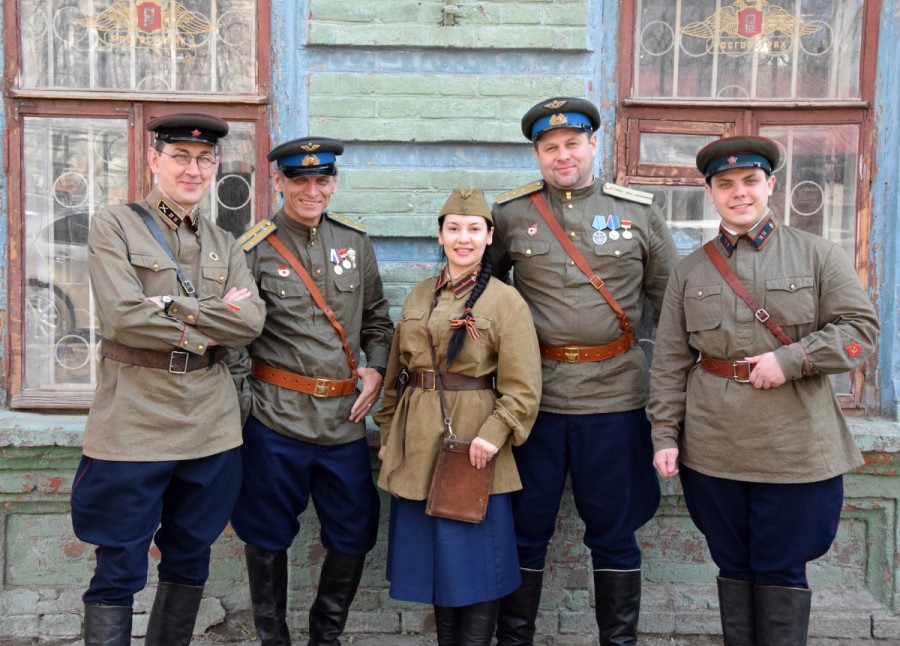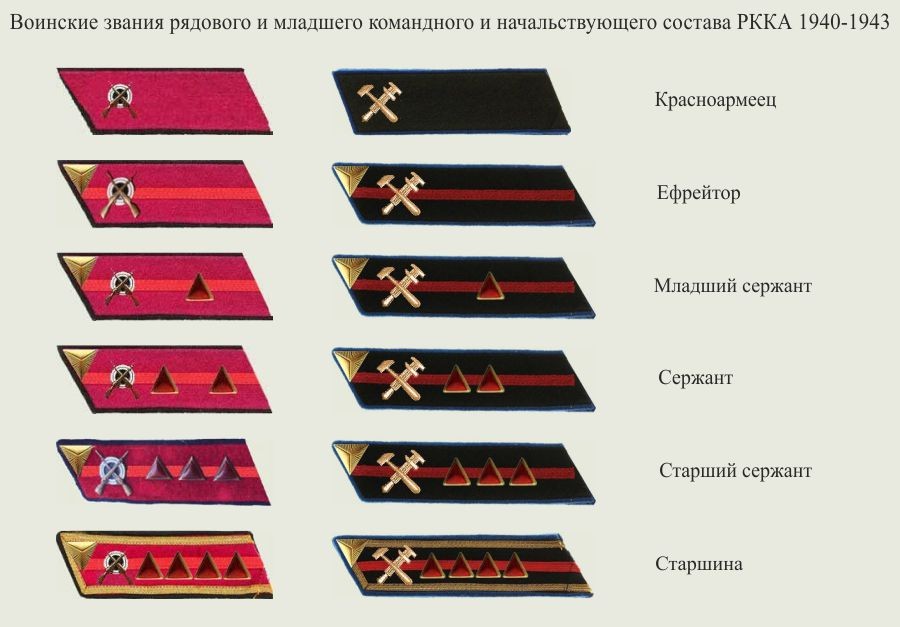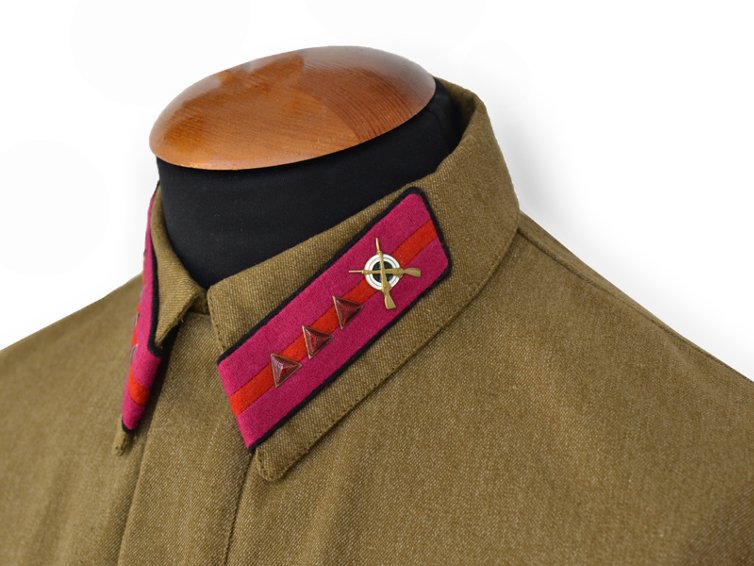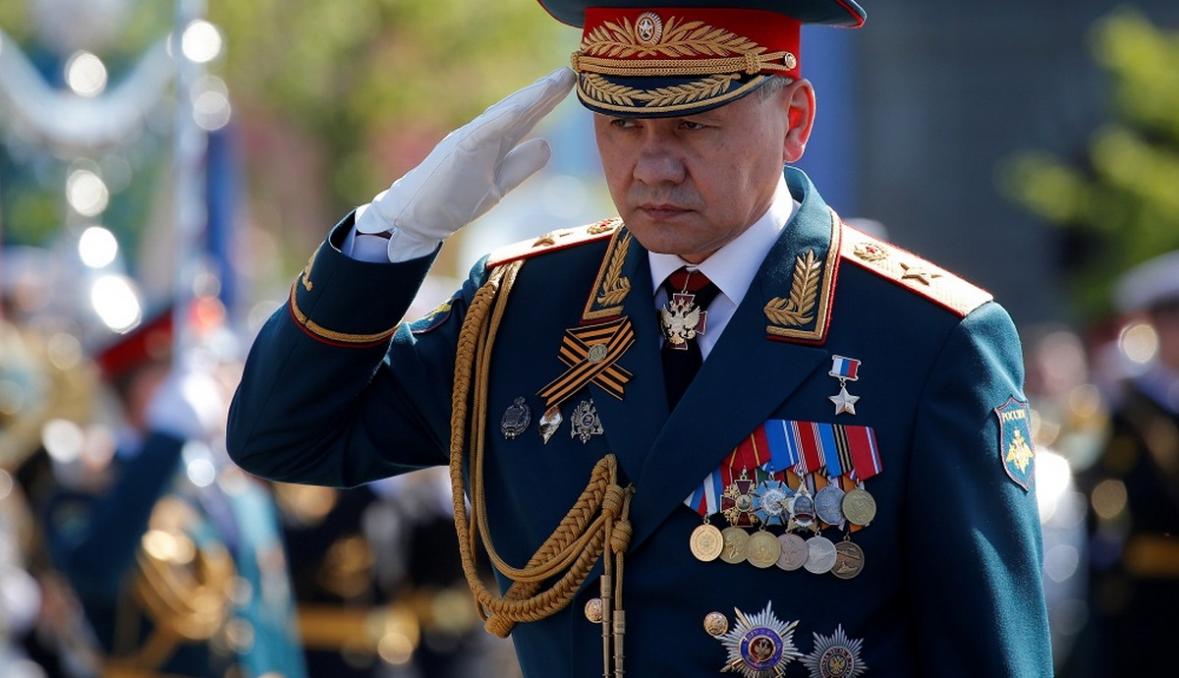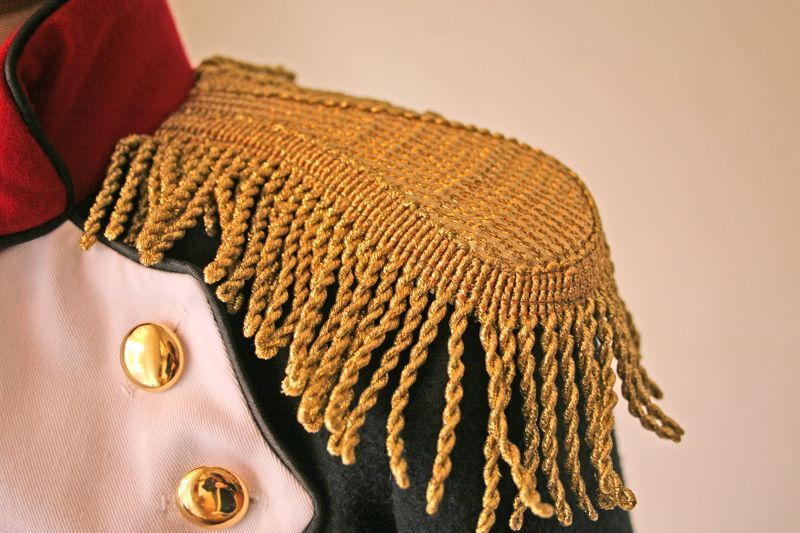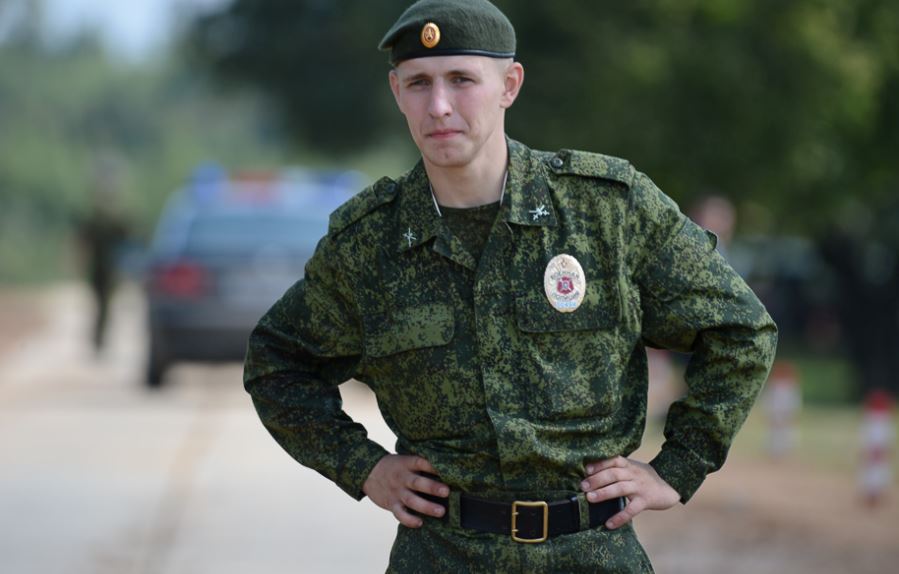After the Bolsheviks came to power, the reconstruction of civil and military structures began. It took quite a long time, with difficulties. The brutal civil war, accompanied by intervention, also had an impact. The Bolshevik army consisted exclusively of volunteers. Military ranks in the Red Army until 1943, collar tabs were not strictly systematized, periodically underwent changes. However, the insignia of the Red Army still existed and were mandatory.
What are buttonholes?
Buttonholes are mainly paired insignia of the RKKA (Workers' and Peasants' Red Army). They were made of fabric and sewn onto the collars of uniforms. They could be used to determine the rank, title, and position of military and civil servants. There were two types of insignia:
- Everyday (multi-colored) and field (dark green). The buttonholes were stripes with an emblem and cloth edging of different colors depending on the army.
- For command and management staff. Sewn-on emblems edged with gold embroidery were considered signs of distinction.
The sewn-on images were made of brass. Most of them were later painted with red enamel or khaki. In special cases, silver or gold plating was applied.
The collar tabs corresponding to various ranks in the Red Army before 1943 periodically underwent minor changes. First of all, this concerned the material of manufacture. They were constantly trying to make it cheaper in order to save the state budget. Sometimes the form also changed. But by the color scheme, it was possible to accurately determine to which unit of the troops the uniform belonged.
Who wore it?
In peacetime, Red Army soldiers were issued uniforms with everyday colored shoulder straps. However, on August 1, 1941, by order No. 253 of the People's Commissariat of Defense of the USSR, field shoulder straps of a protective shade were introduced. With the outbreak of hostilities, only reserve servicemen's uniforms fully complied with the established model, since they had been prepared in advance. The transition to new shoulder straps among active Red Army soldiers was carried out gradually.
The field insignia of the Red Army were green. However, depending on the rank of the military serviceman, certain emblems were used on the stripes. They were various symbols and geometric figures.
The replacement of everyday collar tabs with field ones of the established pattern was carried out rather chaotically, so to speak, as far as possible. Mixed variants were very common. In the conditions of military actions, this created difficulties. Many opposed the innovations, since a single color did not allow for prompt recognition of the commander in battle.
Sizes of insignia
Distinctive collar tabs used in the Red Army until 1943 had various shapes and sizes. Their parameters varied depending on what clothing they were attached to:
- For service jackets and tunics they were made in the form of a parallelogram. The wide part together with the edging was 325 mm, the narrower part reached 100 mm.
- The buttonholes for greatcoats were made in the form of a rhombus. The larger diagonal was 110 mm, the smaller one reached 90 mm. One side of the rhombus together with the edging was 65 mm.
- For generals' uniforms, the buttonholes were also diamond-shaped. The length of the larger diagonal was 110 mm, the smaller one reached 75 mm. One side of the diamond together with the edging was 61 mm. Generals' greatcoats used distinctive stripes of large sizes, 115 x 85 mm respectively. The length of the side with the edging was 65 mm.
It can be concluded that the sizes of the stripes for ordinary Red Army soldiers and generals differed slightly. However, the uniform played a decisive role in quickly determining the rank of a serviceman. Only then did attention turn to emblems and insignia.
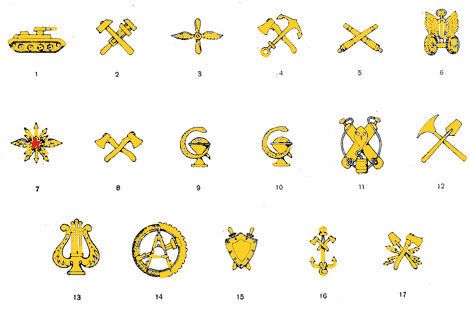
1-Armored troops. 2-Military-technical staff of all branches of the armed forces. 3-Air Force. 4-Railway troops. 5-Artillery and artillery units in other branches of the armed forces. 6-Automobile units and drivers of all branches of the armed forces. 7-Signal troops and signalmen of all branches of the armed forces. 8-Engineering troops. 9-Military medical staff of all branches of the armed forces. 10-Military veterinary staff of all branches of the armed forces (emblem, unlike yellow medical, is white). 11-Chemical troops and chemical units of all branches of the armed forces. 12-Sapper units and sapper units in all branches of the armed forces. 13-Military musicians of all branches of the armed forces. 14-Military economic and administrative staff of all branches of the armed forces. 15-Military legal staff of all branches of the armed forces. 16-Pontoon units and subdivisions of engineering troops. 17-Electrotechnical units and subdivisions of engineering troops.
Methods of attachment to the form
The buttonholes were a separate element of the Red Army uniform. After they were made, they were sewn onto the military equipment. There are several known options for fastening. The first method is to fold it under. The patch was positioned in such a way that the unedged side in the buttonholes could be tucked under the collar. Only then was it sewn on.
The second method is sewing. To do this, the unedged edge of the buttonhole was tucked into the collar. The remaining part was spread out on top, then sewn on. The third method is superficial. The buttonhole was completely placed on the collar exactly along its edge, carefully sewn on all sides.
Military ranks on shoulder straps
The purpose of the buttonholes was to provide the ability to clearly and accurately determine the positions and ranks of military personnel. According to the standard, the field was single-color, edged on three sides. Symbols and geometric figures were attached to it in accordance with ranks. The buttonholes of ordinary Red Army soldiers were a stripe without the use of insignia.
The distinctive signs by which the military ranks of junior officers and command staff were recognized were isosceles triangles. One side was 10 mm long. The higher the rank of the serviceman, the more triangles were present on the field of the buttonhole. One triangle indicated that the uniform belonged to a junior sergeant (squad commander). Two triangles were attached to the buttonholes of a sergeant (junior platoon commander). If the stripe had three objects, it belonged to a sergeant major, unofficially called a "saw". It received this name due to the geometric figures located with the tip up, resembling this type of weapon.
The military rank of the middle command and command staff was determined by a protruding geometric figure similar to a square. Unofficially, it was called a "cube" or "kubar". The length of one side was 10 mm.
One square on the stripe indicated that the uniform belonged to a junior lieutenant (junior military technician). If there were two squares on the stripe, it meant that the military rank was lieutenant. This corresponded to several military positions: junior political leader, military technician, second-rank quartermaster technician, military paramedic, junior military lawyer.
Three squares were attached to the collar tabs of a senior lieutenant. According to job responsibilities, this corresponded to a political leader, a military technician and technician-quartermaster of the first rank, a senior military paramedic, and a military lawyer.
The distinctive insignia on the collar tabs of senior officers and command staff were depicted as rectangles, which were unofficially called "sleepers". The size was strictly fixed and was 16 x 7 mm. The number of geometric figures was as follows:
- One rectangle was present on the collar tabs corresponding to the rank of captain. This implied several military positions: senior political leader, military engineer, quartermaster of the third rank, military doctor, senior military lawyer.
- The presence of two rectangles indicated that the uniform belonged to a major. According to job responsibilities - battalion commissar, military engineer, quartermaster, military doctor, military lawyer of the second rank.
- Three rectangles were attached to the shoulder straps of a lieutenant colonel (senior battalion commissar, military engineer, quartermaster, military doctor, first rank military lawyer).
- When 4 “sleepers” were attached to the shoulder straps, it was a colonel (regimental commissar).
The distinctive signs of the highest command and management staff were rhombuses and stars. The larger diagonal was 17 mm, the smaller one – 8 mm. One geometric figure defined the brigade commander. According to the position, it corresponded to the commissar, engineer, quartermaster, doctor, veterinarian and lawyer of the brigade.
Two diamonds indicated the rank of a division commander. They were attached to the collar tabs of the Soviet Army commissar, engineer, quartermaster, doctor, and lawyer. Three diamonds were the distinctive sign of a corps commander. They corresponded to such positions as commissar, engineer, quartermaster, doctor, veterinarian, and corps lawyer. Four geometric figures decorated the stripes of the uniform of second-rank commanders who held the positions of army commissar of the second rank, army engineer, quartermaster, doctor, veterinarian, and lawyer.
When four diamonds and a golden star are combined in the buttonhole, one can say that the uniform belongs to a first-rank commander (first-rank army commissar). One large golden star was attached to the buttonhole of a Marshal of the Soviet Union.
Civilian employees (NKVD, police, railway, civil aviation) also used buttonholes as insignia. And from 1943, shoulder straps were also introduced. However, the system of ranks and stripes in each ministry and department had its own specifics.
Video

